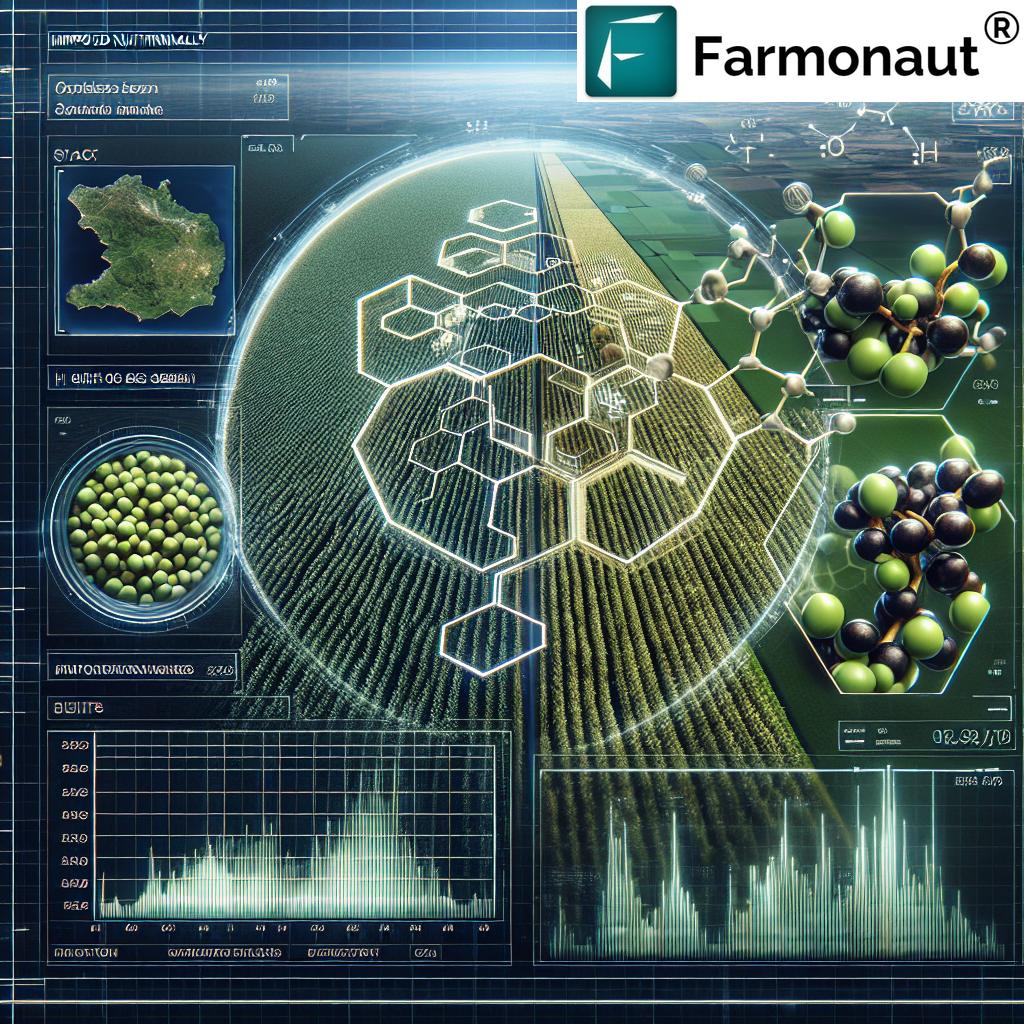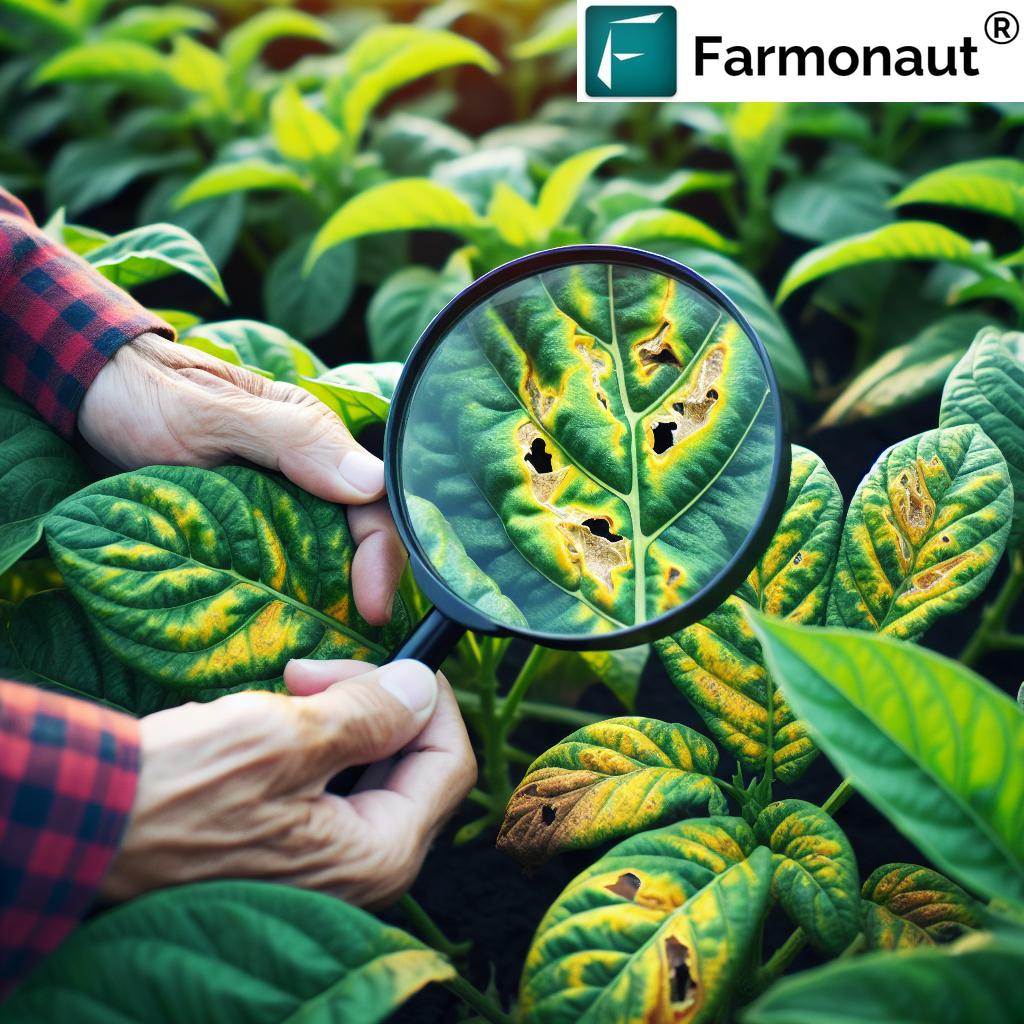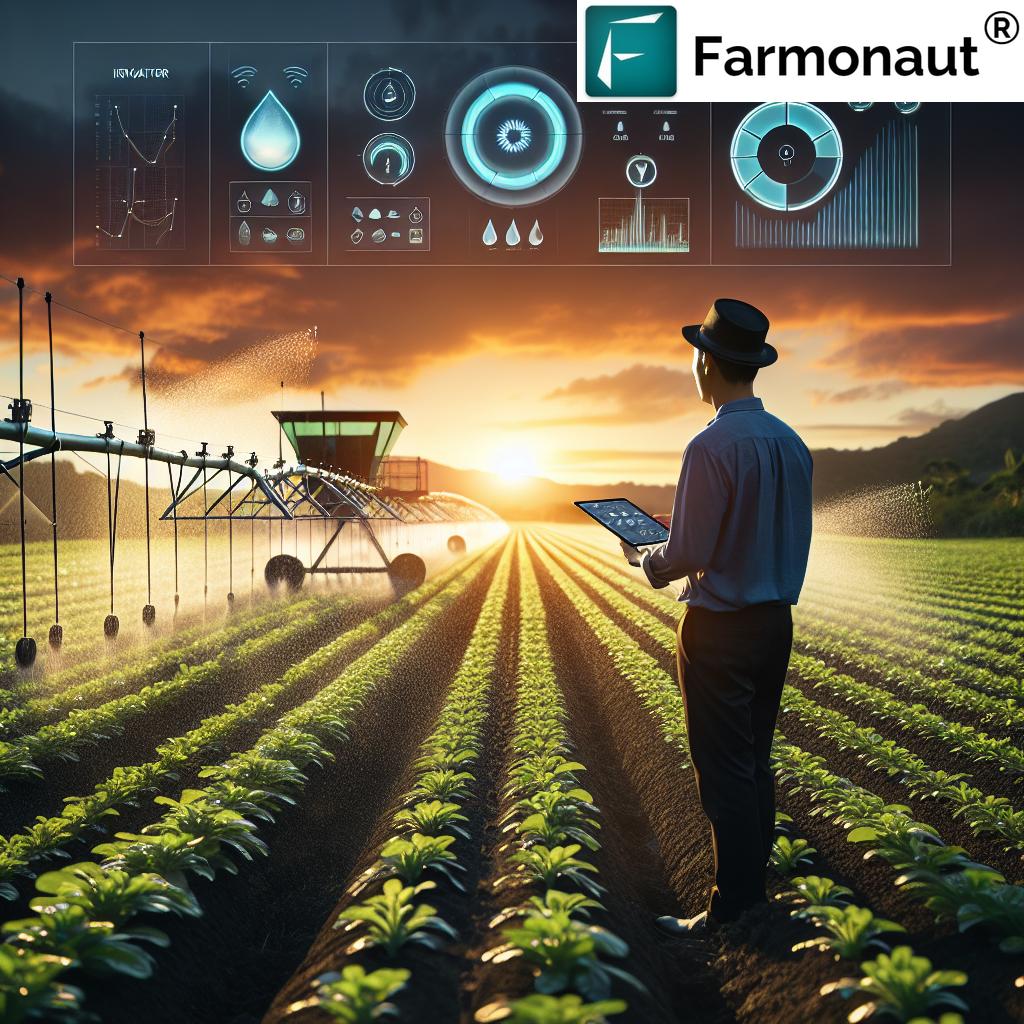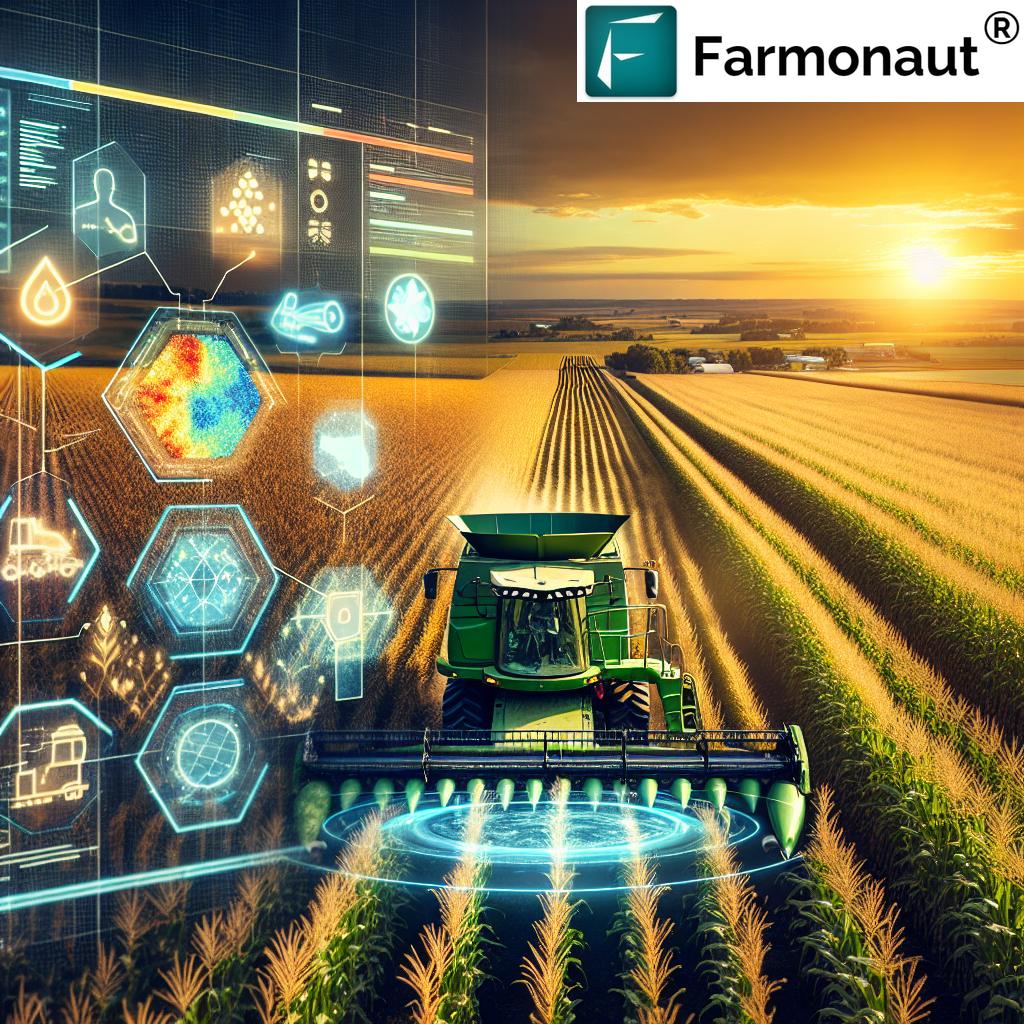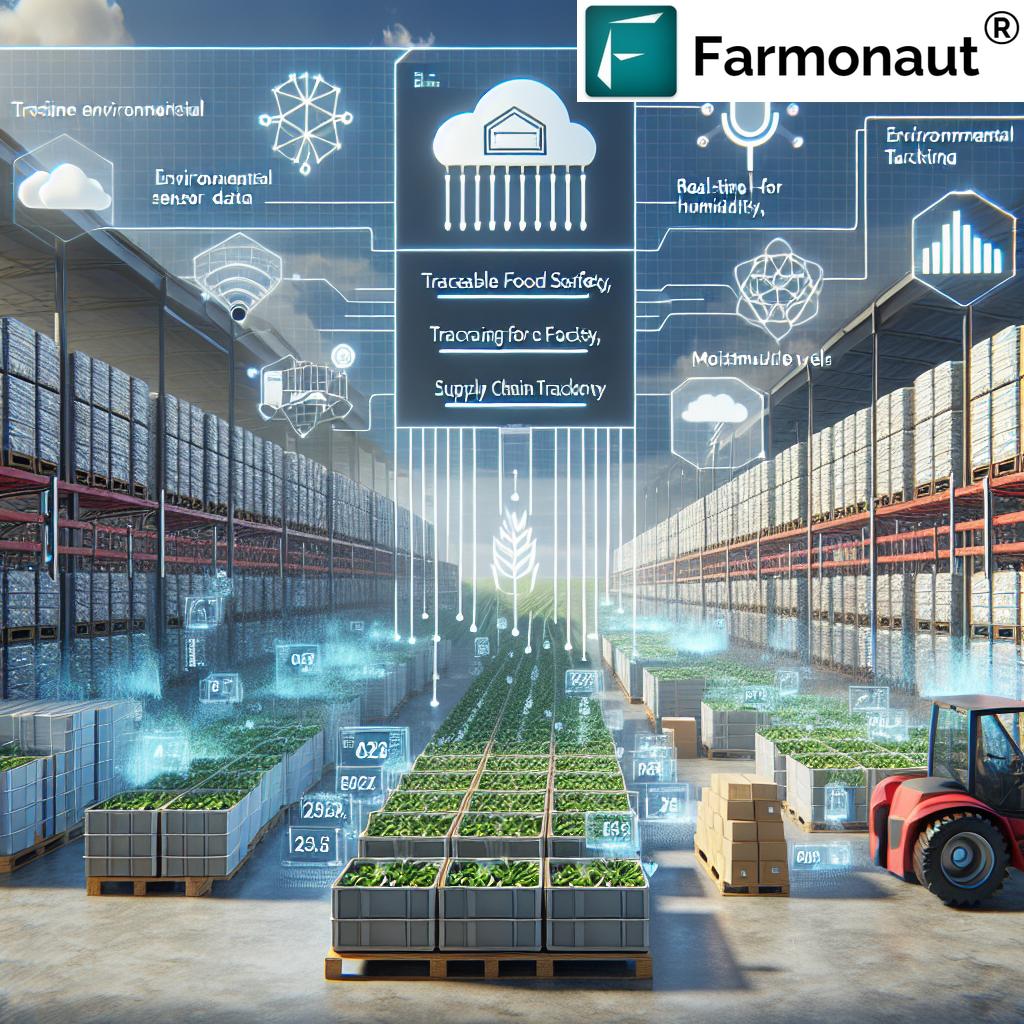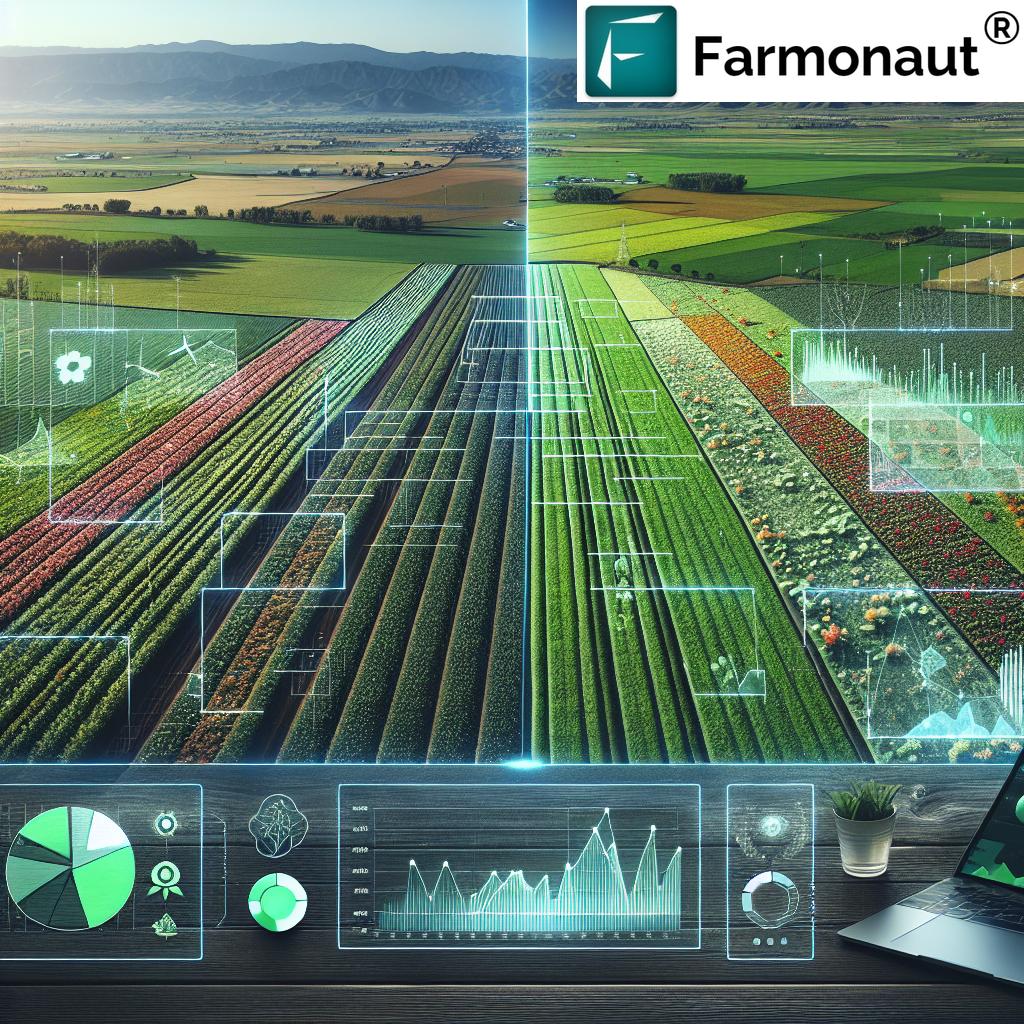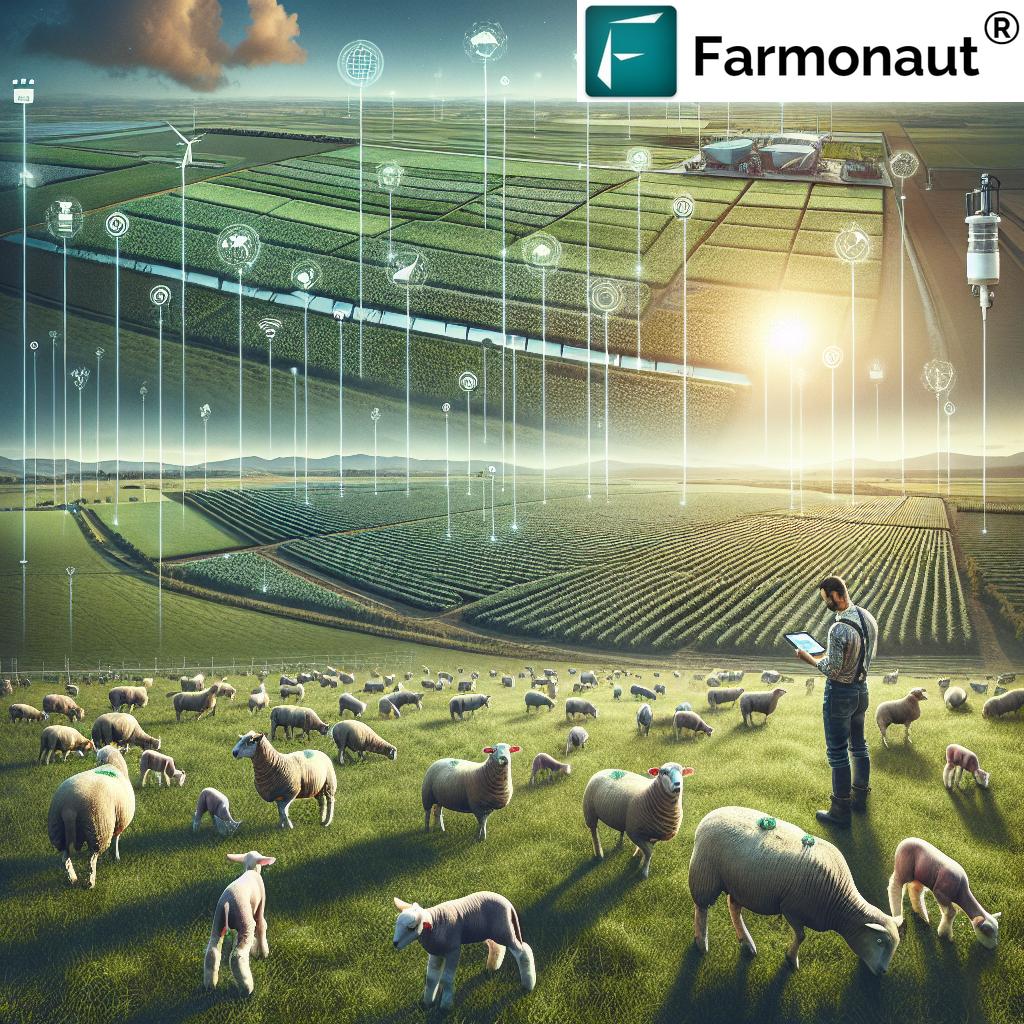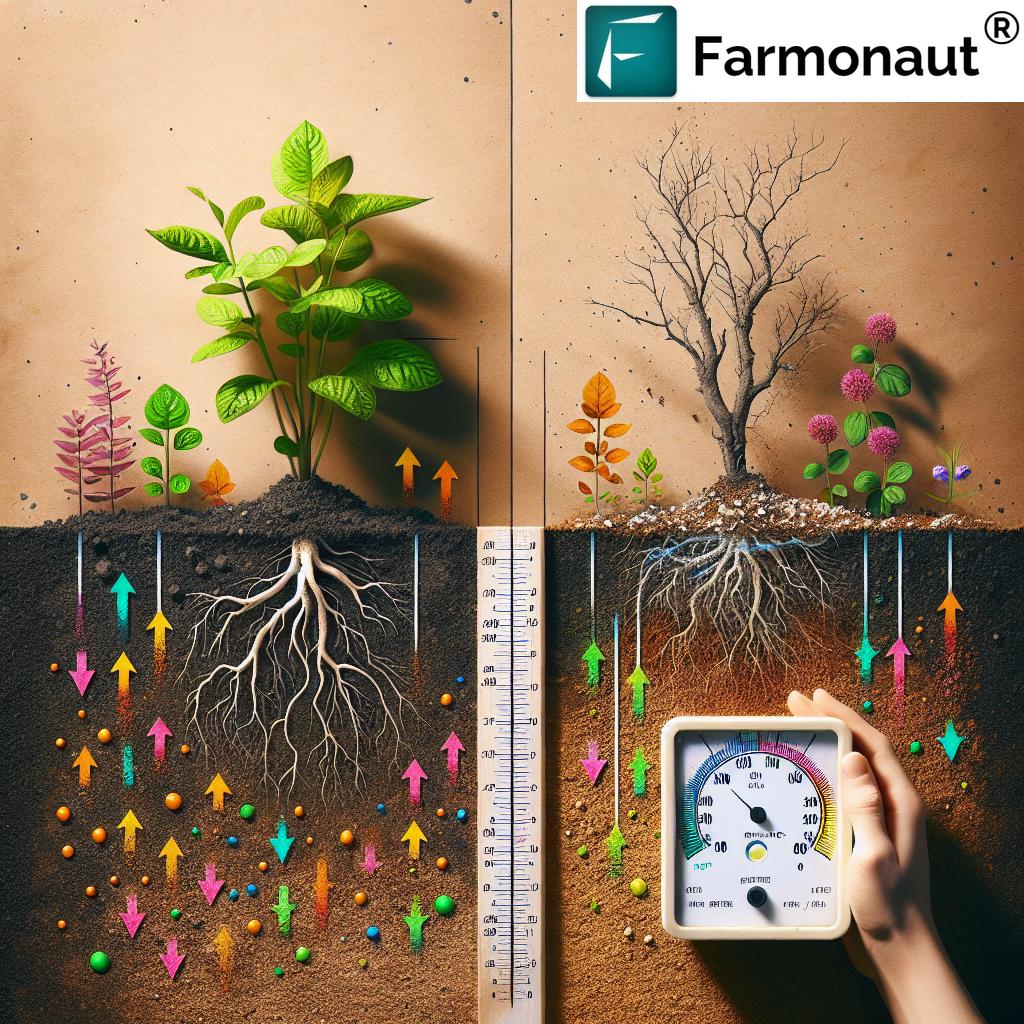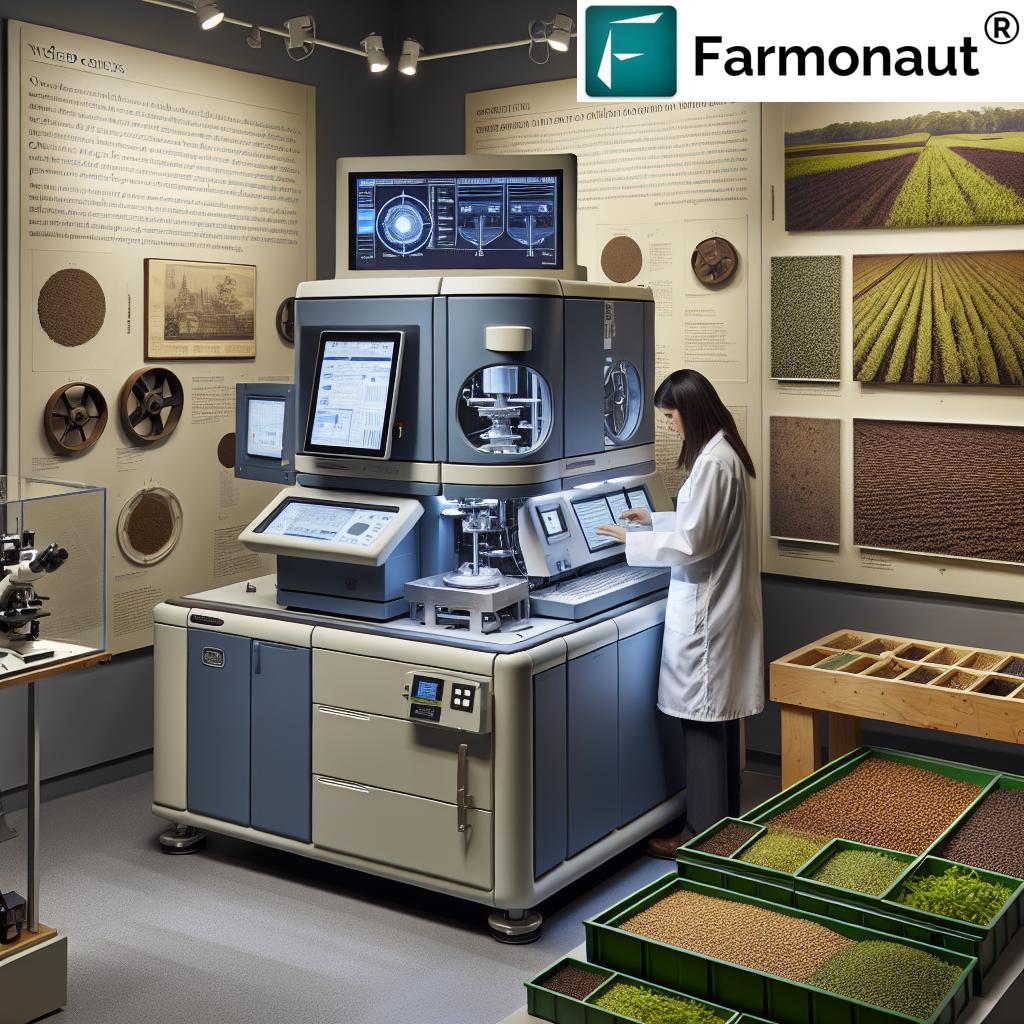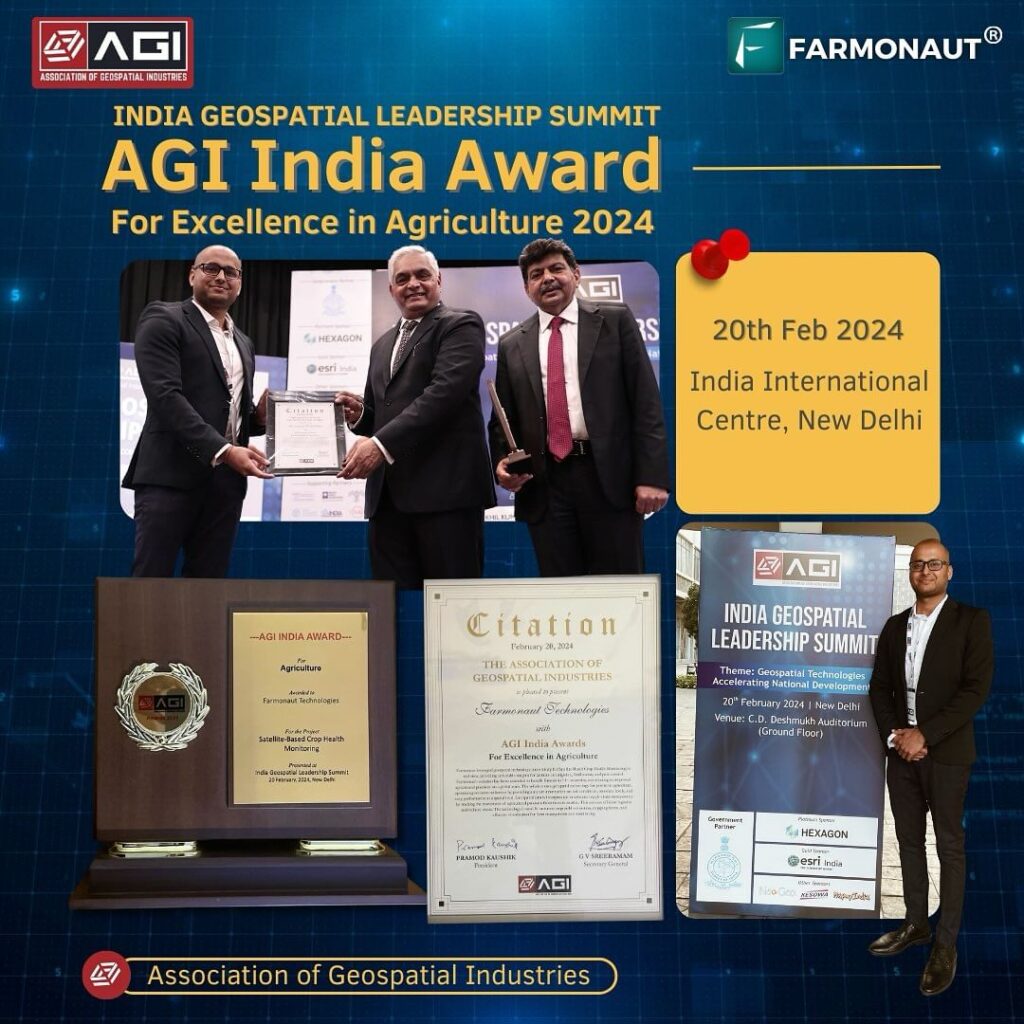Revolutionizing Global Agriculture: How Digital Farming and Aerial Imagery Are Shaping a Sustainable Food Future
“Aerial imagery in agriculture has increased crop yields by up to 20% while reducing water usage by 30% in some regions.”
In the ever-evolving landscape of global agriculture, we find ourselves at the cusp of a technological revolution that promises to reshape the way we produce food and manage our planet’s precious resources. As we delve into the world of digital farming solutions and precision agriculture innovations, we’ll explore how these cutting-edge technologies are not just changing the face of farming but are actively working towards a more sustainable and efficient future for food production.
The Dawn of Digital Farming
The agricultural sector has always been quick to adapt to new technologies, from the invention of the plow to the advent of genetically modified crops. However, the current wave of digitization in agriculture represents a quantum leap in our ability to understand, manage, and optimize farming practices. Digital farming encompasses a wide range of technologies, including:
- Satellite and aerial imagery
- Internet of Things (IoT) sensors
- Artificial Intelligence (AI) and Machine Learning
- Big Data analytics
- Blockchain for supply chain transparency
These technologies work in concert to provide farmers with unprecedented insights into their operations, allowing for more precise decision-making and resource management.
Aerial Imagery: A Bird’s Eye View of Agricultural Innovation
One of the most transformative technologies in modern agriculture is aerial imagery. By leveraging satellites, drones, and other airborne platforms, farmers can now gain a comprehensive view of their fields that was previously unimaginable. This bird’s eye perspective offers several key advantages:
- Early detection of crop stress and disease
- Precise monitoring of soil moisture and nutrient levels
- Accurate crop yield predictions
- Efficient planning of planting and harvesting schedules
Aerial imagery in agriculture, combined with advanced analytical tools, allows farmers to identify problems before they become visible to the naked eye. This proactive approach can significantly reduce crop losses and optimize resource use.
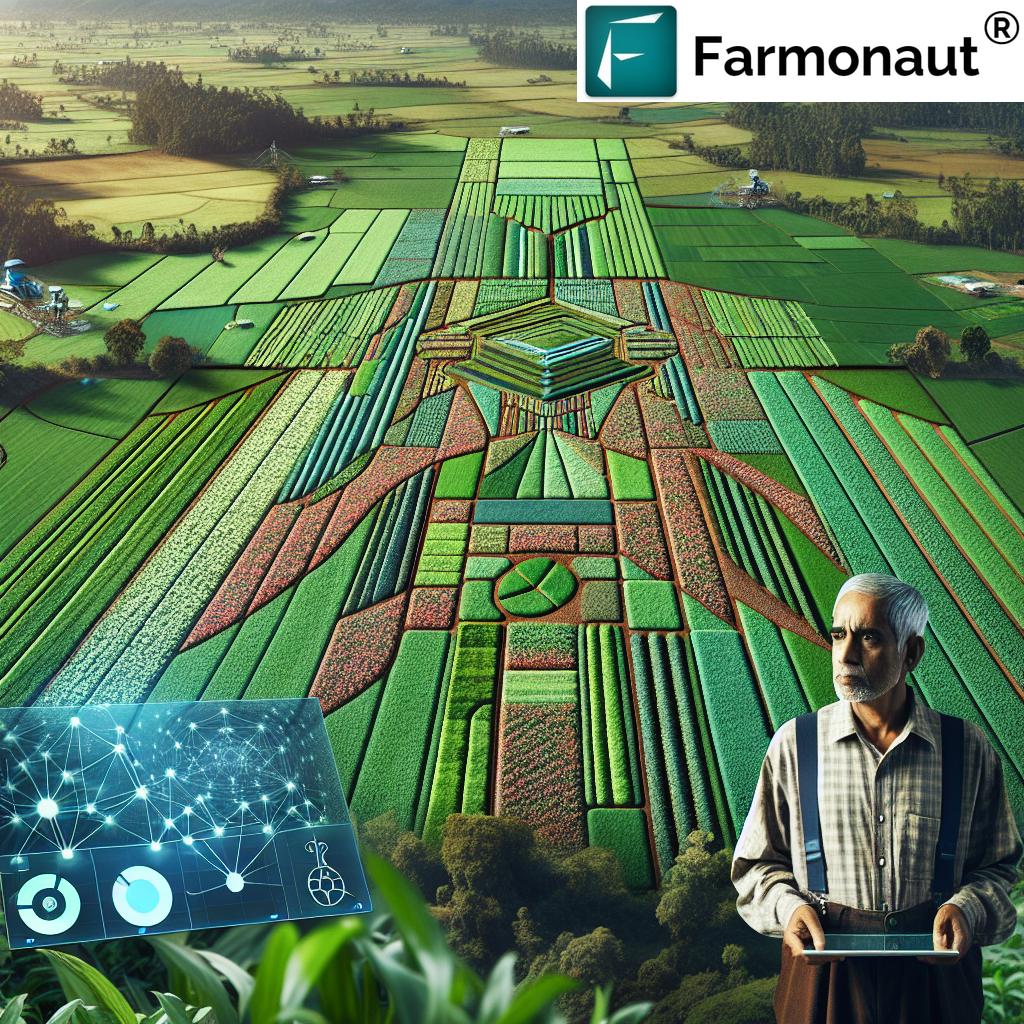
At Farmonaut, we’re at the forefront of this revolution, offering advanced satellite-based farm management solutions that make precision agriculture accessible to farmers worldwide. Our platform integrates satellite imagery with AI-powered analytics to provide real-time insights into crop health, soil conditions, and more.
The Power of Agtech Data Analytics
The true power of digital farming lies in its ability to collect, process, and analyze vast amounts of data. Agtech data analytics transforms raw information into actionable insights, enabling farmers to make data-driven decisions that can significantly improve farm efficiency and sustainability.
Key areas where agtech data analytics are making a difference include:
- Precision application of fertilizers and pesticides
- Optimized irrigation scheduling
- Predictive maintenance of farm equipment
- Accurate forecasting of crop yields
By leveraging these insights, farmers can reduce waste, minimize environmental impact, and increase their overall productivity.
AI and Machine Learning in Agriculture
Artificial Intelligence and Machine Learning are revolutionizing the way we approach agricultural challenges. These technologies can process and learn from vast datasets, identifying patterns and making predictions that would be impossible for humans to discern.
Some applications of AI in agriculture include:
- Automated crop and weed identification
- Predictive modeling for pest and disease outbreaks
- Robotic harvesting and sorting
- Personalized crop management recommendations
Farmonaut’s Jeevn AI Advisory System is a prime example of how AI can be harnessed to provide personalized, real-time advice to farmers, helping them optimize their operations and improve yields.
Blockchain and Traceability in Agriculture
As consumers become increasingly concerned about the origin and quality of their food, blockchain technology is emerging as a powerful tool for ensuring transparency and traceability in agricultural supply chains. Blockchain creates an immutable record of a product’s journey from farm to table, providing benefits such as:
- Enhanced food safety through rapid traceability
- Reduced fraud and counterfeiting in the supply chain
- Improved consumer trust and brand loyalty
- More efficient supply chain management
Farmonaut’s blockchain-based traceability solutions are helping industries, particularly in agriculture, to build trust and reduce fraud in their supply chains.
Sustainable Agriculture Technology: A Path to a Greener Future
“Digital farming solutions have helped reduce pesticide use by up to 40% on tech-enabled farms, promoting more sustainable agricultural practices.”
As we face the dual challenges of feeding a growing global population and mitigating the environmental impact of agriculture, sustainable agriculture technology offers a promising path forward. Digital farming solutions are at the heart of this transformation, enabling practices that are both productive and environmentally friendly.
Some key ways that digital farming contributes to sustainability include:
- Reduced water usage through precision irrigation
- Minimized chemical inputs through targeted application
- Decreased soil erosion through data-driven land management
- Lower carbon emissions through optimized farm operations
By leveraging technologies like IoT sensors, AI-powered analytics, and satellite imagery, farmers can make more informed decisions that balance productivity with environmental stewardship.
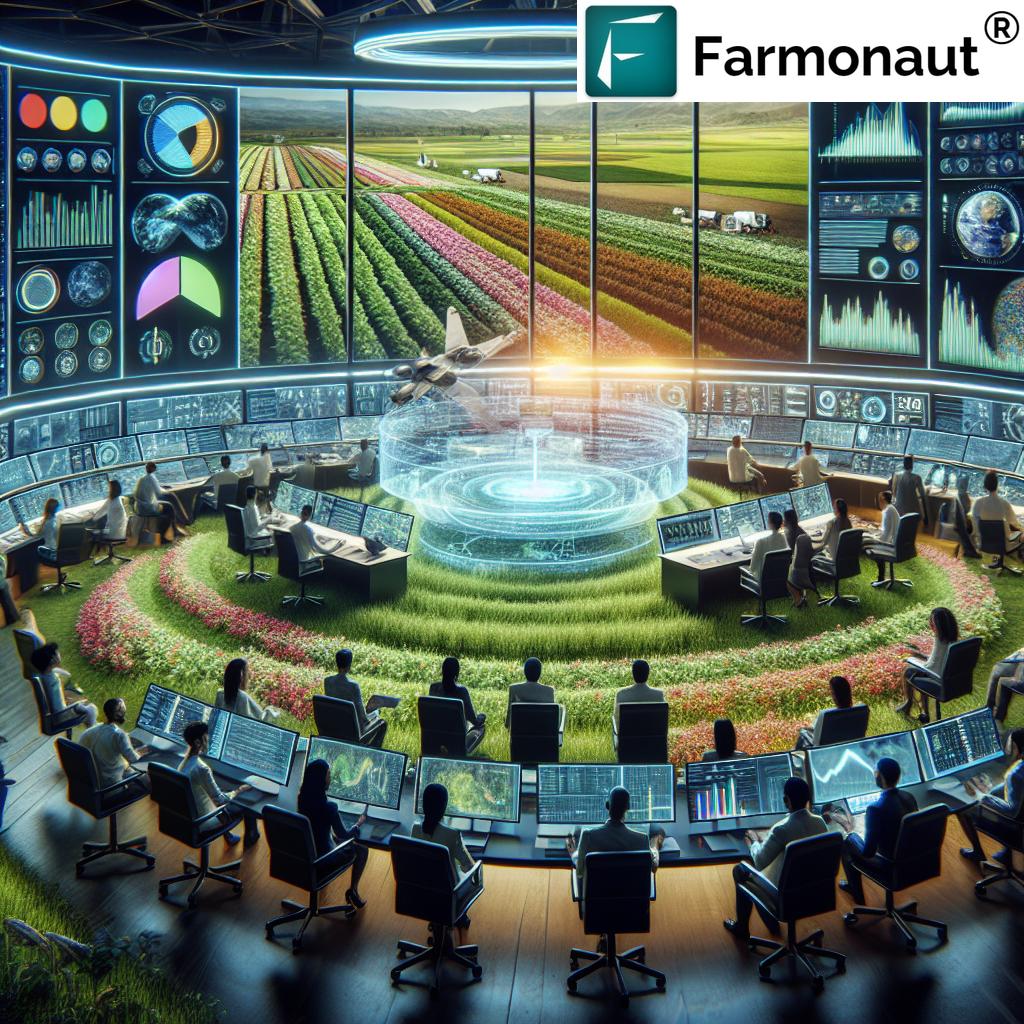
Precision Agriculture Innovations: Maximizing Efficiency
Precision agriculture is all about doing more with less. By applying the right inputs at the right time and in the right place, farmers can maximize their yields while minimizing waste. Some of the latest precision agriculture innovations include:
- Variable rate technology for precise application of inputs
- GPS-guided autonomous tractors and harvesters
- Drone-based crop spraying and seeding
- Smart irrigation systems that respond to real-time soil moisture data
These technologies not only improve farm efficiency but also contribute to more sustainable farming practices by reducing overuse of resources.
Farm Efficiency Optimization: The Role of Data
In the digital age, data is the new currency of agriculture. By collecting and analyzing data from various sources, farmers can gain a holistic view of their operations and identify areas for improvement. Farm efficiency optimization through data analytics can lead to:
- Reduced input costs
- Improved crop yields
- Better labor allocation
- Enhanced equipment utilization
Farmonaut’s platform plays a crucial role in this optimization process by providing farmers with easy access to satellite data and AI-powered insights, enabling them to make data-driven decisions that boost efficiency and productivity.
Agricultural Sustainability Trends: A Global Perspective
As we look at the broader picture of agricultural sustainability, several key trends are emerging globally:
- Increased adoption of regenerative farming practices
- Growing interest in vertical farming and urban agriculture
- Rise of plant-based and alternative protein sources
- Focus on reducing food waste through improved supply chain management
- Integration of renewable energy sources in farm operations
These trends, coupled with the advancements in digital farming, are shaping a more sustainable future for agriculture. Farmonaut’s technologies, such as our carbon footprinting feature, are helping agribusinesses align with these trends by providing tools to monitor and reduce their environmental impact.
Agritech for Developing Countries: Bridging the Digital Divide
While digital farming technologies offer immense potential, their adoption in developing countries faces unique challenges. However, the impact of agritech in these regions can be transformative, addressing issues such as food security, smallholder farmer empowerment, and rural development.
Key considerations for implementing agritech in developing nations include:
- Developing affordable and accessible technologies
- Providing education and training on digital tools
- Improving rural connectivity and infrastructure
- Tailoring solutions to local agricultural practices and needs
Farmonaut’s mission to make precision agriculture affordable and accessible aligns perfectly with the needs of developing countries. Our platform’s design allows for scalability, serving clients from smallholder farmers to large agribusinesses, making it an ideal solution for diverse agricultural landscapes.
Environmental Impact of Digital Farming: A Balancing Act
While digital farming offers numerous benefits for sustainability, it’s important to consider its overall environmental impact. The production and disposal of electronic devices, energy consumption of data centers, and potential e-waste are all factors that need to be balanced against the environmental benefits of precision agriculture.
To address these concerns, the agritech industry is focusing on:
- Developing more energy-efficient devices and sensors
- Implementing circular economy principles in technology lifecycles
- Utilizing renewable energy sources for powering farm technologies
- Creating biodegradable or recyclable electronic components
At Farmonaut, we’re committed to minimizing the environmental footprint of our technologies while maximizing their positive impact on agricultural sustainability.
The Future of Food Production Technology: What Lies Ahead
As we look to the future of food production technology, several exciting developments are on the horizon:
- Integration of 5G networks for real-time data transmission in rural areas
- Advanced gene editing techniques for crop resilience and nutrition
- Widespread adoption of vertical farming in urban environments
- Development of AI-powered robotic systems for complex farming tasks
- Implementation of quantum computing for advanced agricultural modeling
These technologies promise to further revolutionize agriculture, making it more efficient, sustainable, and capable of meeting the world’s growing food demands.
Digital Farming Technologies and Their Impact on Sustainable Agriculture
| Technology | Primary Application in Agriculture | Estimated Resource Efficiency Improvement (%) | Potential Environmental Impact | Adoption Rate in Developed Countries (%) | Adoption Rate in Developing Countries (%) | Challenges to Global Implementation |
|---|---|---|---|---|---|---|
| Aerial Imagery | Crop health monitoring, yield prediction | 20-30 | High | 60 | 15 | Cost, data interpretation skills |
| AI-powered Analytics | Decision support, predictive modeling | 15-25 | Medium | 40 | 5 | Complex algorithms, data quality |
| IoT Sensors | Real-time monitoring of soil and climate conditions | 10-20 | Medium | 50 | 10 | Connectivity issues, maintenance |
| Precision Application Systems | Targeted use of water, fertilizers, and pesticides | 25-40 | High | 55 | 8 | Initial investment, training needs |
| Blockchain for Traceability | Supply chain management, food safety | 5-15 | Low | 30 | 3 | Complexity, stakeholder buy-in |
Conclusion: Embracing the Digital Agriculture Revolution
As we’ve explored throughout this article, the integration of digital farming solutions and aerial imagery in agriculture is revolutionizing the way we approach food production. From AI-powered analytics to space-based imaging, these technologies are paving the way for a more sustainable and efficient future in farming.
At Farmonaut, we’re proud to be at the forefront of this agricultural revolution. Our platform combines satellite technology, AI, and blockchain to offer comprehensive solutions that address the diverse needs of modern agriculture. By making these advanced technologies accessible and affordable, we’re empowering farmers around the world to embrace precision agriculture and contribute to a more sustainable food future.
As we move forward, the continued development and adoption of agtech will be crucial in addressing global challenges such as food security, climate change, and resource scarcity. By harnessing the power of digital farming, we can create a more resilient, productive, and sustainable agricultural sector that benefits both people and the planet.
FAQ Section
Q: What is digital farming?
A: Digital farming refers to the use of advanced technologies such as satellite imagery, IoT sensors, AI, and data analytics to optimize agricultural practices, improve efficiency, and enhance sustainability in farming operations.
Q: How does aerial imagery benefit agriculture?
A: Aerial imagery provides farmers with a comprehensive view of their fields, enabling early detection of crop stress, precise monitoring of soil conditions, accurate yield predictions, and efficient planning of farming activities.
Q: What role does AI play in agriculture?
A: AI in agriculture helps process vast amounts of data to provide insights for decision-making, automate tasks like crop and weed identification, predict pest outbreaks, and offer personalized crop management recommendations.
Q: How does digital farming contribute to sustainability?
A: Digital farming enhances sustainability by optimizing resource use, reducing chemical inputs, minimizing water waste, and lowering carbon emissions through data-driven, precise farming practices.
Q: What challenges do developing countries face in adopting agritech?
A: Developing countries often face challenges such as limited access to technology, lack of infrastructure, insufficient training, and financial constraints in adopting and implementing agritech solutions.
Q: How is blockchain used in agriculture?
A: Blockchain in agriculture is primarily used for supply chain traceability, ensuring transparency in food production, enhancing food safety, and building consumer trust by providing an immutable record of a product’s journey from farm to table.
Q: What is the future of food production technology?
A: The future of food production technology includes advancements such as 5G integration for real-time data transmission, advanced gene editing for crop improvement, widespread adoption of vertical farming, AI-powered robotics, and the use of quantum computing for complex agricultural modeling.
To explore how Farmonaut’s digital farming solutions can benefit your agricultural operations, visit our web app or check out our API for developers. For more detailed information on integrating our services, refer to our API Developer Docs.
Download our mobile apps for on-the-go access to advanced farm management tools:
Farmonaut Subscriptions
Join us in revolutionizing agriculture for a sustainable future. Together, we can harness the power of technology to feed the world while preserving our planet.




